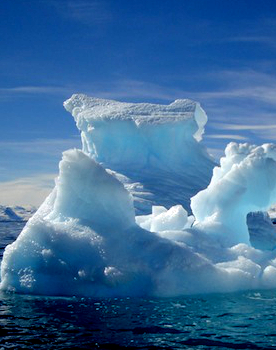Big melt risk highlighted
 Experts say that the global ‘cryosphere’ must be a top priority in addressing the climate crisis.
Experts say that the global ‘cryosphere’ must be a top priority in addressing the climate crisis.
The World Meteorological Organization (WMO) has announced the elevation of the cryosphere as one of its highest priorities in response to the increasing impacts of diminishing sea ice, melting glaciers, ice sheets, permafrost, and snow.
These changes have profound implications for sea level rise, water-related hazards, water security, economies, and ecosystems worldwide.
During the recent World Meteorological Congress, the WMO's top decision-making body, delegates from around the world expressed concerns about the global ramifications of cryosphere changes, particularly for small island states and densely populated coastal zones.
WMO Secretary-General Prof. Petteri Taalas said that the cryosphere issue is not limited to the Arctic and Antarctic but is a global concern.
To address the challenges, the WMO endorsed a new resolution that calls for enhanced coordination of observations, predictions, data exchange, research, and services.
The resolution proposes increased funding from both the regular budget and extrabudgetary sources to ramp up activities.
Sue Barrell from Australia and Diane Campbell from Canada, co-chairs of the WMO's Executive Council's Panel on Polar and High Mountains Observations, Research, and Services, highlighted the urgent need for action.
They emphasised the critical role of the cryosphere in water resources, stating that over a billion people depend on water from snow and glacier melt carried by major river basins.
The irreversible changes in the cryosphere will impact adaptation strategies and access to water resources.
The melting of Arctic permafrost has been described as a “sleeping giant” of greenhouse gases, as it stores twice as much carbon as currently exists in the atmosphere.
Furthermore, the melting of mountains and Arctic permafrost increases the risk of cascading natural hazards.
Glaciers, Greenland, and Antarctica ice sheet melt account for about 50 per cent of sea level rise, a trend that is accelerating.
This has cascading effects on small island developing states and densely populated coastal areas.
Changes in the cryosphere in mountainous regions are also leading to an increased risk of hazards such as rockslides, glacier detachments, and floods.
Pakistan, for instance, has identified over 3,000 glacial lakes, of which 36 are potentially dangerous and at high risk of outburst.
The country experienced numerous glacial lake outbursts and flash floods in 2022, following extreme heat and devastating floods earlier that year.
The resolution endorsed by the WMO emphasises the need for greater investment and mobilisation of activities beyond the WMO community.
It outlines high-level priorities and proposed actions that align with WMO's Long-Term Goals, aiming to address the emerging risks from the changing cryosphere in a changing climate.
The WMO and the Intergovernmental Panel on Climate Change monitor climate indicators such as sea level rise, ice, and glaciers.
Recent reports show alarming changes, including record-breaking glacier melt in the European Alps and the lowest recorded levels of sea ice in Antarctica and the Arctic.








 Print
Print